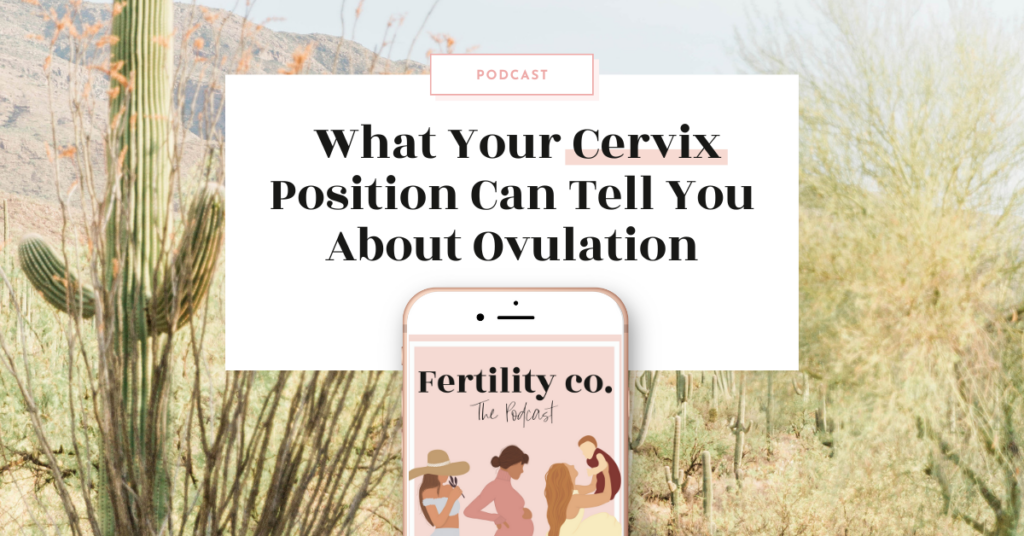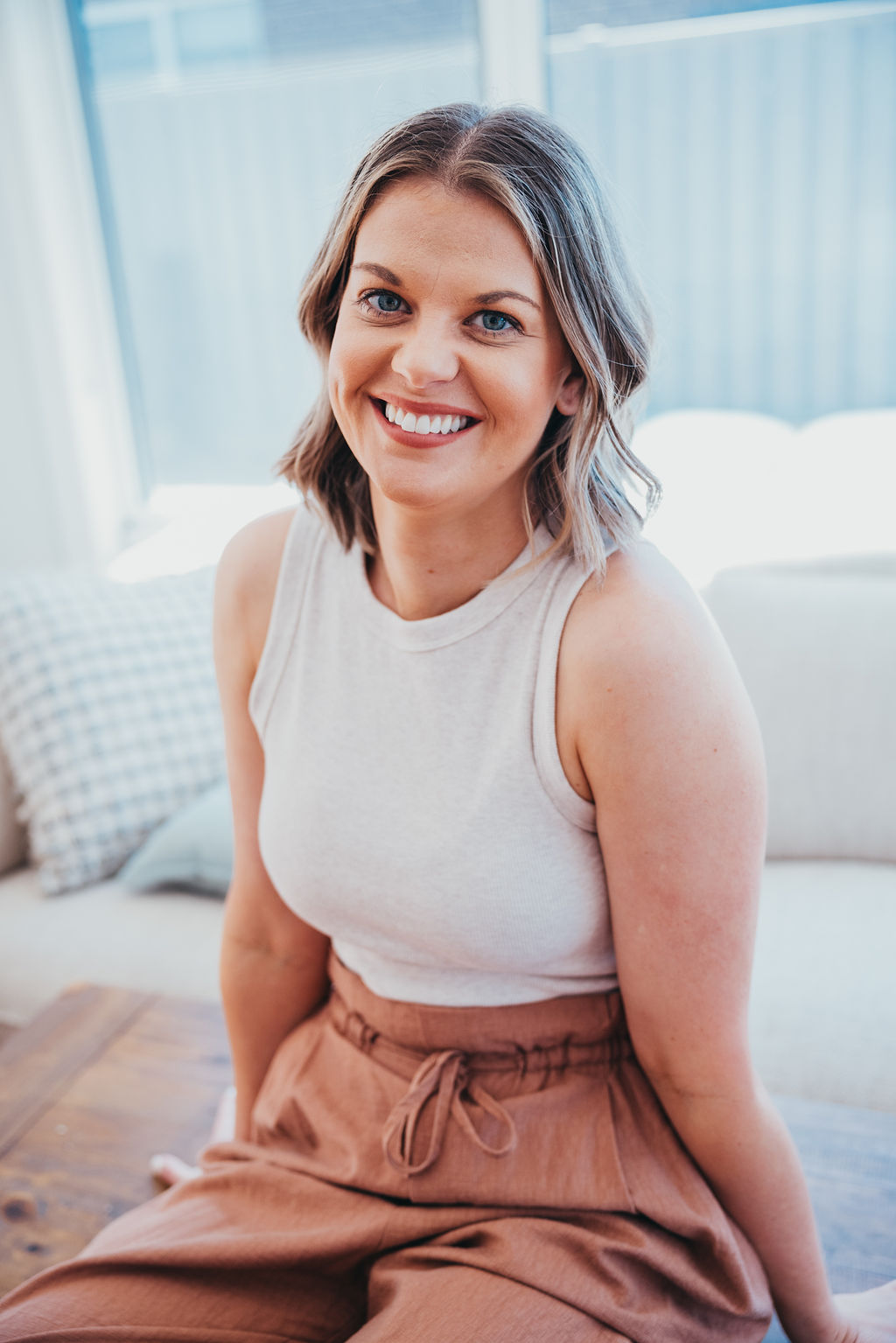
LISTEN ON: APPLE PODCASTS | SPOTIFY
I spend a lot (a lot) of time talking about cervical mucus and basal body temperature as the fertile signs that can tell you the most about your fertility and ovulation.
Did you know there is another sign that can also give you incredible insight into your fertile window? It’s one that I swear by whenever I’m a little confused about what might be happening in my cycle.
It’s the position of your cervix, which changes significantly throughout your cycle and can really help you to troubleshoot if your mucus or BBT aren’t super clear. It’s not essential, but can be very helpful.
HERE’S WHAT WE COVER
- The primary fertile signs – cervical mucus and BBT
- Cervix position as a secondary fertile sign
- How to check cervix position
- How does the cervix actually change throughout the menstrual cycle?
- Tracking the changes in your cervix position
EPISODE NOTES
Primary fertile signs – cervical mucus and BBT
As ovulation approaches, cervical mucus becomes thinner, wetter and clearer and provides an ideal environment for sperm to survive and swim to meet the egg for fertilisation and conception to occur. Cervical mucus will then become dry and sticky the day after ovulation for the rest of the cycle as that dense mucus plug re-forms at the cervix and blocks sperm’s entry into the uterus.
Next up, basal body temperature. Your basal body temperature will rise the day after ovulation due to a surge in progesterone. The last day of low temperatures is likely the day that ovulation occurred. Your temperature will drop again around the day of menstruation as progesterone levels drop too.
Every woman is different! Some women may clearly be able to detect their fertile signs, while others may have more difficulty because their temperature shift isn’t obvious or their cervical mucus is hard to see or they only see really small amounts. The more experience you get tracking your cycle, the easier it will become to interpret your body’s own fertile signs. But, there are some other helpful ways to confirm things if you want some more clarity.
Cervix position is a secondary fertile sign
If you’re only going to track one fertile sign on its own, it needs to be your cervical mucus.
If you want to back it up, you chart your BBT.
If you still need some more clarity, then the next fertile sign you chart is the shape and position of your cervix.
As a physiotherapist with a special interest in women’s health and the pelvic floor, as someone who relies on her hands to feel for even slight changes in muscle tension and soft tissue, I absolutely loved learning about the changes in my cervix throughout my menstrual cycle. Being able to physically feel changes in my body during my fertile window really helped me to clarify my knowledge when I was first learning about my fertile signs.
This step is absolutely not essential, if you’re not comfortable feeling your cervix every day that is absolutely fine. You are not going to lose anything by not doing this. But I really wanted to include this fertile sign and give it its own special spot on the Fertility Pyramid because it’s something that has really helped me. To physically be able to feel when your cervix is open or closed is incredibly helpful real-time information. But just like cervical mucus and body temperature, you need to do it consistently throughout your menstrual cycle in order to actually track the changes. Again, it’s all about comparing what you observe today with what you observed yesterday.
How to check cervix position
Now something to keep in mind, you should not really be checking your cervical mucus at the same time as you check your cervix. Remember what I said about scooping mucus out from the inside – it can cause a natural lubricative effect and give you unreliable results, and really just confuse you. So, I recommend monitoring your mucus throughout the day whenever you’re in the toilet, and only check your cervix once a day when you’re in the shower. So, whether that’s the morning or the evening for you, checking it in the shower makes sure your hands are clean and you’re not introducing infection into your cervix, and it’s likely you shower at around the same time every day so it means you’re checking your cervix at the same time every day too, for more accurate insight.
How does the cervix actually change throughout the menstrual cycle?
We already know that during menstruation, the cervix is open to allow bleeding to occur. We don’t need to check our cervix during our periods. But as our period ends, the mucus plug forms at the cervix and it closes, we can feel that the cervix sits quite low and we can feel that it is closed. As this mucus plug dissolves and the cervix opens for ovulation, we can feel that the cervix now sits high and is more open. Then, after ovulation, the cervix closes again and the mucus plug re-forms, it sits lower once again.
Here’s another way to think about it: Have you ever found sex to be really pleasant and enjoyable in a particular position, and then tried it again a week later only to find that it was actually quite uncomfortable? Or sometimes, it feels like things can go a little deeper compared to other times? This is due to changes in your cervical position, and funnily enough, it is during our fertile window that sex feels better and the penis can reach deeper into the vagina. Why? So that sperm can be ejaculated nice and close to the uterus, and they don’t have to swim as far.
Your cervix, which is the lower part of your uterus that enters into the vagina, changes quite significantly throughout your menstrual cycle, and if you know what you’re looking for, you can quite easily feel these changes and use this knowledge to understand where you are in your menstrual cycle. You’ve probably realised by now that the body sets itself up in the best way possible for pregnancy to occur, it’s all about survival of the human race after all. So, the cervix becomes the perfect entryway for sperm to reach and fertilise the egg. It becomes soft and will open up to allow sperm to enter the uterus, and it also rises, so moves up closer to the uterus, due to the surging oestrogen levels around ovulation, which just like in pregnancy, actually softens our ligaments slightly and this includes the ligaments that hold the uterus in place.
Tracking the changes in your cervix position
So, the easiest way to remember what the cervix looks and feels like during our fertile window is with the acronym – SHOW.
- Soft
- High
- Open
- Wet (Because we already know about the wet sensation at the vulva and the fertile mucus that the cervix produces).
In the non-fertile phases between our period and ovulation, and again after ovulation and before our next period, the cervix does the exact opposite. It is firm, low, closed and dry.
So, right now I want you to take your finger and touch the tip of your nose. How does it feel? Kind of firm, closed, because we’re touching the tip, not picking our nose, and it’s dry.
Now take your finger and place it on your lips. How does that feel? Soft, open and likely a little wet.
In your non-fertile phases, your cervix feels like the tip of your nose. It sits quite low, so if you insert your finger into your vagina, you will actually hit your cervix faster than you would during your fertile window. The opening at the cervix almost feels like a dimple as it’s closed.
As oestrogen levels rise with ovulation, the cervix softens, opens and rises and you might actually find that you really have to stretch your finger to reach the cervix.
Now if you’re interested in learning more about how the cervix changes throughout your menstrual cycle, I do recommend giving this a go even if just for one cycle, purely to really understand what it feels like during both the fertile and non-fertile phases. You’ll have to check every day at about the same time, and you will actually feel in real-time the physical changes of your cervix as you move through the phases of your cycle. If you want to use this long-term, you absolutely can and you might eventually just want to use it to confirm ovulation by feeling throughout your fertile window and confirming when the cervix closes and becomes low again afterwards. But you need to track the changes throughout the entire cycle, excluding menstruation, before you can get to this point of confidence.

+ show Comments
- Hide Comments
add a comment